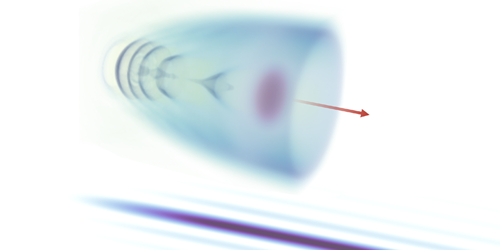Creating Fast Bunches of Electrons with Lasers
The idea was first proposed in 1979: use a laser to separate a plasma’s electrons from its ions, thereby creating an electric field that accelerates electrons to giga-electron-volt (GeV) energies over a few micrometers. Turning that idea into useful devices requires bestowing electrons with not just high energy but also with a tight spread in energy. Now a team led by Simon Hooker of Oxford University, UK, has demonstrated a plasma-preparation technique that yields 1.2 GeV electrons with an energy spread of 4.5% [1]. Although that performance falls short of conventional accelerators, further improvement is possible.
In general, the more intense the laser and the denser the plasma, the greater the electron acceleration. But if the laser–plasma interaction is pushed up into the nonlinear regime, the acceleration becomes unruly. Working at lower intensities and densities requires sustaining the acceleration for longer. It also requires that the electrons in the lowest-density part of the plasma are accelerated first. That way, the exiting electrons form a tight bunch.
Hooker and his collaborators achieved both goals by directing ring-shaped pulses from an auxiliary laser into a gas cell. These pulses ionized the gas and created a cylindrical plasma channel 110 mm long with favorable radial and axial density profiles. When pulses from the main laser entered the channel, electrons in the low-density plasma at the channel entrance were injected and accelerated in the main body of the channel.
Such optically produced plasma channels can readily operate at the kHz repetition rates needed for applications, including free-electron lasers (FELs). The researchers calculated that if they could extend the channel length to 410 mm, their setup could successfully drive a soft x-ray FEL.
–Charles Day
Charles Day is a Senior Editor for Physics Magazine.
References
- A. Picksley et al., “All-optical GeV electron bunch generation in a laser-plasma accelerator via truncated-channel injection,” Phys. Rev. Lett. 131, 245001 (2023).




